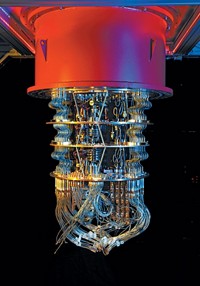Advertisement
Grab your lab coat. Let's get started
Welcome!
Welcome!
Create an account below to get 6 C&EN articles per month, receive newsletters and more - all free.
It seems this is your first time logging in online. Please enter the following information to continue.
As an ACS member you automatically get access to this site. All we need is few more details to create your reading experience.
Not you? Sign in with a different account.
Not you? Sign in with a different account.
ERROR 1
ERROR 1
ERROR 2
ERROR 2
ERROR 2
ERROR 2
ERROR 2
Password and Confirm password must match.
If you have an ACS member number, please enter it here so we can link this account to your membership. (optional)
ERROR 2
ACS values your privacy. By submitting your information, you are gaining access to C&EN and subscribing to our weekly newsletter. We use the information you provide to make your reading experience better, and we will never sell your data to third party members.
Computational Chemistry
NMR prediction glitch found and fixed
The error produced incorrect peak assignments
by Sam Lemonick
October 16, 2019
| A version of this story appeared in
Volume 97, Issue 41
Researchers looking for compounds that could fight pancreatic cancer instead found a glitch in a 5-year-old computer script for automating nuclear magnetic resonance predictions (Org. Lett. 2019, DOI: 10.1021/acs.orglett.9b03216). The program, which has been in regular use, could lead a scientist to incorrectly characterize a molecule, although no major errors have yet emerged.
Philip Williams and colleagues at the University of Hawaii at Manoa were attempting to characterize some compounds from cyanobacteria that degrade too quickly for NMR analysis. So they turned to a computational technique, developed by Thomas Hoye of the University of Minnesota Twin Cities and Patrick Willoughby, now of Ripon College, that uses density functional theory (DFT) to predict NMR spectra (Nat. Protoc. 2014, DOI: 10.1038/nprot.2014.042). Their code automatically searches DFT-generated files on a user’s computer, extracts information, and calculates chemical shifts.
When double-checking its results, Williams’s group found disagreements in some of the peak assignments for leptazoline molecules. The researchers tracked the problem to how different operating systems sort files. Hoye and Willoughby wrote their code assuming files were sorted alphanumerically, which was true on the Windows, Apple, and Linux systems they tested the program on. But some versions of those systems sort in different ways, and the code was inadvertently extracting data from the wrong files.
Williams says the error was small and did not affect their results or conclusions. At press time, Chemical & Engineering News had not learned of any other errors caused by this glitch in the roughly 150 papers that cite the original procedure. Hoye and Willoughby plan to update their 2014 paper and include code from Williams’s group that fixes the file-sorting issue.
T. Daniel Crawford, director of the Molecular Sciences Software Institute at Virginia Tech, says he doesn’t fault Hoye and Willoughby, noting that software bugs are common. He says chemists should study software development best practices, including rigorous testing across different operating systems, which could have prevented the glitch.




Join the conversation
Contact the reporter
Submit a Letter to the Editor for publication
Engage with us on Twitter